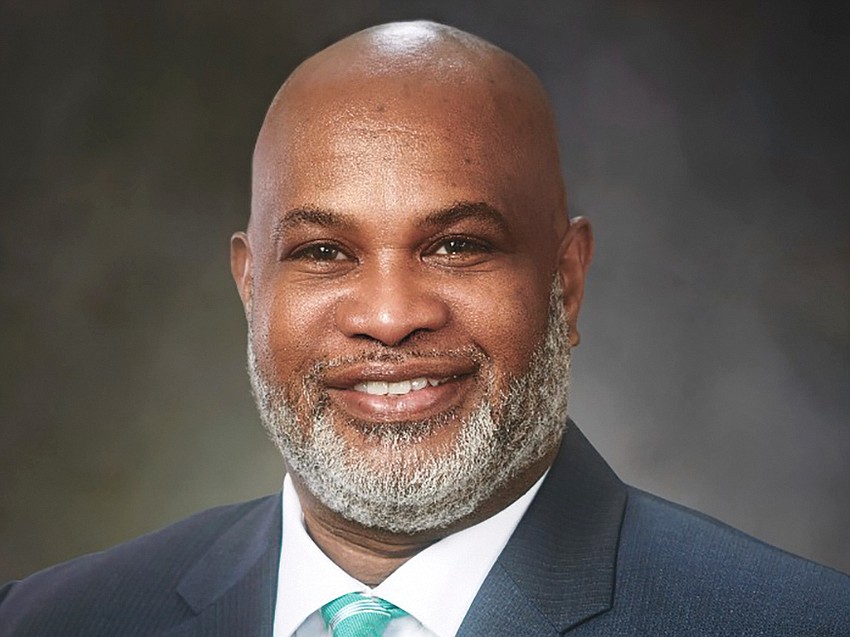
As with ports around the world, the Jacksonville Port Authority faces potential headwinds in early 2025 in the form of new tariffs and a dockworker strike.
Robert Peek, JaxPort chief commercial officer, told the port board Dec. 9 that officials were closely monitoring President-elect Donald Trump’s possible tariff increases and the contract negotiations between the International Longshoremen’s Association and United States Maritime Alliance.

Peek said both could disrupt or reduce volume to JaxPort, although the effects would depend on the level of the tariff increases and the duration of a possible strike by the ILA if the union and USMA fail to meet a Jan. 15 deadline for a new work agreement.
On Truth Social, Trump has made proposals that include imposing a 25% tax on all products entering the country, including from Canada and Mexico, and a 60% tariff on goods from China.
JaxPort benefits from two factors that could help insulate it from both the tariffs and a strike, Peek said.
They are the port’s focus on diversifying its business versus relying on certain geographic regions or types of products and its strong connection to Puerto Rico, which wouldn’t be affected by tariffs imposed on foreign nations.
The effects of Trump’s proposed tariffs depend on whether he imposes an across-the-board increase or mostly targets Mexico, Canada and China, Peek said.
Trump has raised both possibilities and also has suggested raising tariffs on the BRICS group – Brazil, Russia, India, China and South Africa.
Peek said imports and exports from China combined make up 4% to 5% of JaxPort’s total volume. He said Mexico and Canada combine for 8% to 10% of the volume.
On Nov. 30, Trump said on Truth Social that he would impose 100% tariffs on BRICS countries if those nations attempt to establish a new rival currency to the dollar or support an alternative currency to replace the dollar as the international reserve medium of exchange.
“We require a commitment from these Countries that they will neither create a new BRICS Currency, nor back any other Currency to replace the mighty U.S. Dollar or, they will face 100% Tariffs, and should expect to say goodbye to selling into the wonderful U.S. Economy,” Trump said.
Peek said the effect of tariffs would hinge on how they affect consumer prices for products, as producers pass along the increased costs to taxpayers. Demand for certain goods could be reduced as a result.

JaxPort handles cargo that includes vehicles, containers, dry bulk items like sand and gravel, and breakbulk items like grain, fluids and large equipment that doesn’t fit in containers.
In addition, the port has established connections to several global regions to protect JaxPort from disruptions in any one area.
“That’s been our strategy for many years, not just because we’re concerned about tariffs but because of anything that might happen. So that’s natural disasters, man-made disasters, political changes or trade policy,” he said.
The Puerto Rico connection also gives JaxPort protection that other ports might lack, he said.
“We’re unique among the East Coast ports in that half of our container volume and 10% of our automobile volume is with Puerto Rico, so that’s not subject to tariffs,” he said.
As for the strike, a contract extension for the ILA is set to expire Jan. 15 after the union and the United States Maritime Alliance, known as USMX, which represents the shipping and port industries, came to an agreement in October that raised pay for ILA members by 61.5% over six years.
That agreement ended a three-day strike but did not resolve another key issue raised by the ILA, which sought to bar the automation and semi-automation of port operations.
On Dec. 4, the ILA issued a statement saying a breakdown in negotiations could lead to another strike.
“USMX-ILA negotiations ended when management introduced their intent to implement semi-automation – a direct contradiction to their opening statement where they assured the ILA that neither full nor semi-automation would be on the table,” ILA President Harold Daggett said in the release.
“The ILA has always supported modernization when it leads to increased volumes and efficiency. We embrace technologies that improve safety and efficiency, but only when a human being remains at the helm. Our fight in these current negotiations is not just to protect our current ILA workforce, but future generations of longshore workers.”
USMX said it was not seeking to eliminate jobs but needed to increase the efficiency of ports and provide the technology needed for expansion.

JaxPort CEO Eric Green told board members that the port wasn’t part of the negotiation. Some private terminal operators at the port employ ILA members.
Peek said that if a strike were to last a week, port officials estimate that 16 ships would be affected. That does not mean the cargo wouldn’t arrive, because it could simply be delayed or placed on other ships bound for Jacksonville.
A longer strike would have a deeper effect, he said.
“If an ILA strike lingers – so if it went more than two or more weeks – then that’s a much larger impact, not just for us but internationally,” he said.
“Most analysts think it would take many weeks to recover from a two-week strike, because what would happen is those ports are going to try to clear the backlog of all the ships that want to come in while at the same time trying to deal with their regular operations as well.”